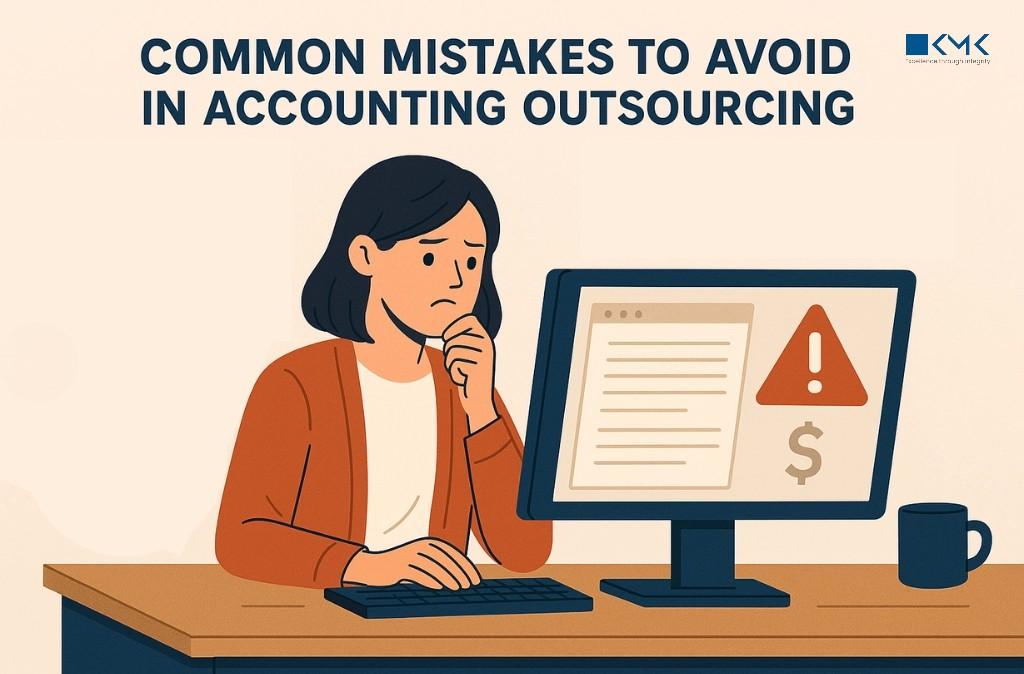How to Avoid Common Mistakes in SaaS Outsourced Accounting

SaaS businesses have unique accounting challenges—subscription models, deferred revenue, contract modifications, usage-based pricing, and compliance under ASC 606. Because of these complexities, many SaaS companies outsource accounting to experts who specialize in subscription and revenue-recognition accounting. But outsourcing doesn’t guarantee perfection. Mistakes in saas outsourced accounting can lead to restatements, compliance penalties, or misleading financials.
In this post, we’ll go through frequent pitfalls SaaS firms make when outsourcing accounting—and practical tips to sidesttep them.
Why SaaS Accounting Is So Tricky
Let’s start with what makes SaaS accounting distinct:
-
Revenue is often recognized over time, not all upfront
-
Contracts may include tiers, upgrades/downgrades, add-ons, usage fees
-
Deferred revenue and unearned balances must be carefully tracked
-
ASC 606 compliance demands consistent judgments and disclosure
-
Integration between billing, CRM, and accounting systems is complex
Given that backdrop, handing accounting to a third party without clear oversight can expose risk.
Common Mistakes in SaaS Outsourced Accounting
Here are mistakes you see repeatedly—and how to prevent them:
1. Not Validating ASC 606 Expertise
One of the biggest errors is outsourcing to a general accounting provider who lacks SaaS experience. They may mishandle:
-
Performance obligations
-
Contract modifications
-
Variable consideration
-
Deferred revenue schedules
What to do: When evaluating providers, ask for SaaS-specific case studies, ask how they handle ASC 606, and test their understanding of subscription accounting.
2. Weak Communication & Misaligned Expectations
Outsourced teams often operate at a distance. If your internal team and the accounting provider aren’t aligned, misunderstandings happen—incorrect revenue recognition, missing data, late close cycles.
What to do: Define clear SLAs, schedule regular sync meetings, and establish protocols for escalations and clarifications.
3. Poor System Integration
If billing, CRM, subscription platforms, and accounting systems don’t talk to each other, you’ll get data mismatches, manual adjustments, and errors in revenue recognition.
What to do: Demand that your outsourced provider supports integration (APIs, middleware) and ask for a proof-of-concept showing alignment of billing → accounting.
4. Failing to Maintain Audit Trails & Documentation
SaaS accounting requires transparency. If your accounting partner doesn’t maintain robust audit trails showing how numbers were derived, your investors or auditors will challenge you.
What to do: Insist on full documentation—contract terms, adjustments, calculations, journal entries. Ensure everything is traceable.
5. Overlooking Edge Cases
Common edge cases include contract cancellations, refunds, credits, mid-term upgrades/downgrades, usage surcharges. If your outsourced provider treats these as exceptions rather than integral parts of revenue logic, you’ll have misstatements.
What to do: Provide sample edge cases up front and vet how they will be handled in your agreement.
6. Letting Cost Overwhelm Quality
Some firms choose the cheapest provider—but that often means cutting corners on staff quality, controls, or system complexity.
What to do: Evaluate value over cost. A slightly higher rate is worth it when the provider offers deep SaaS accounting knowledge and strong controls.
Best Practices to Ensure SaaS Outsourcing Success
To make your relationship with a SaaS accounting provider smooth and error-free, apply these practices:
-
Prep with a Strong Onboarding Framework
Provide your provider with:
• A clear map of your subscription models, contracts, and billing logic
• Historical data, reconciliations, trial balances
• Edge cases you expect (credits, cancellations, upgrade paths)This reduces ambiguity and speeds up alignment.
-
Require Regular Reconciliations & Controls
Ask for monthly reconciliations between billing, CRM, and accounting. Use controls such as variance thresholds that trigger review. -
Use Key SaaS Metrics for Oversight
Monitor metrics such as MRR/ARR, churn, deferred revenue roll-forwards, average contract length. The outsourced provider should produce reports showing these aligned to financials. -
Retain Internal Oversight
Even when you outsource, maintain internal finance oversight—review entries, question reconciliations, and have a fallback internal capacity (even minimal) to understand the accounting logic. -
Engage a Strong Audit & Compliance Culture
SaaS investors and auditors expect high compliance. Ensure your outsourced partner is comfortable with audits, maintains documentation, and supports disclosures.
How Automation Supports Error Reduction
One of the strongest allies against mistakes in SaaS accounting is automation. Automation tools can:
-
Enforce revenue recognition rules under ASC 606
-
Generate journal entries based on subscription events
-
Manage deferred revenue schedules automatically
-
Flag anomalies for review
SaaS accounting automation combined with expert oversight greatly reduces errors common in manual processes. Technology and domain knowledge must go hand in hand.
The Financial Angle: Oversight with a Virtual Accountant
To ensure your outsourced arrangement stays cost-effective and accurate, many SaaS startups engage a virtual accountant for small business. Advantages include:
-
Independent review of outsourced partner’s results
-
Budgeting and forecasting oversight
-
Paying attention to contract costs and preventing scope creep
-
Ensuring accounting decisions tie back to business metrics
Your outsourced provider may run the accounting engine—but a virtual accountant ensures the engine runs optimally and aligns with strategy.
Checklist: What to Check Before Committing
Before you sign an agreement, run through this checklist:
-
Does the provider understand saas outsourced accounting and ASC 606?
-
Can they handle contract changes, refunds, credits?
-
Do they integrate with your billing/CRM systems?
-
Will they maintain full audit trails and documentation?
-
Are SLAs, reporting cadence, and escalation paths defined?
-
How will edge cases be handled?
-
What controls and reconciliations will be in place?
-
What is your internal oversight or review role (or virtual accountant role)?
If answers are solid, you’ll reduce your risk considerably.
Conclusion
Outsourcing SaaS accounting can be a smart move, but only when done carefully. Many of the biggest errors—misinterpreting contracts, failing edge cases, weak integrations, missing documentation—stem from inexperience or misalignment. By picking a provider who truly understands SaaS, combining automation with domain control, maintaining strong internal oversight (or via a virtual accountant), and insisting on transparency, you can enjoy the benefits of outsourcing without falling into common pitfalls.






